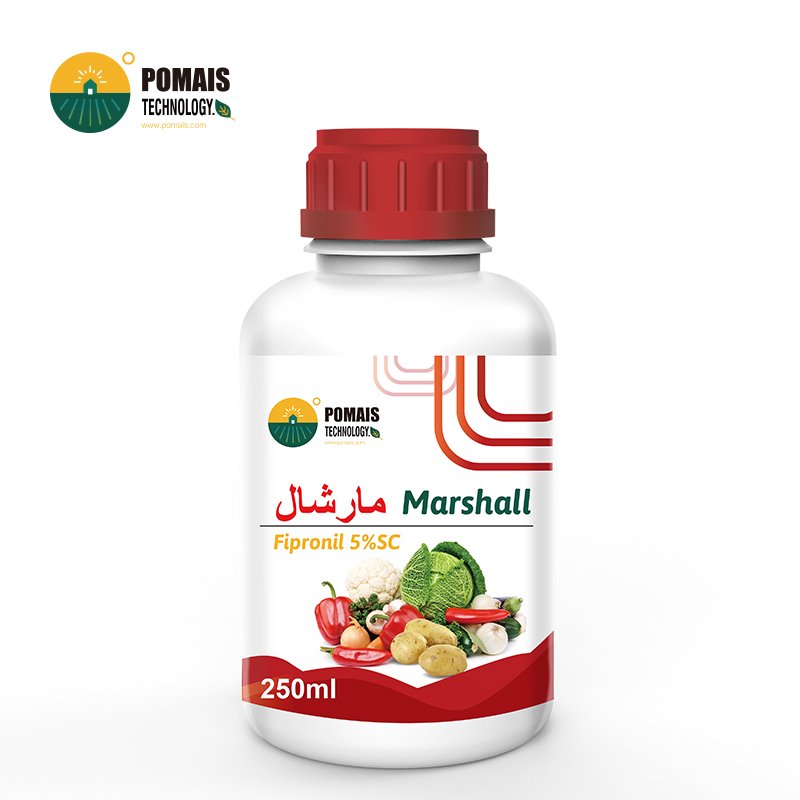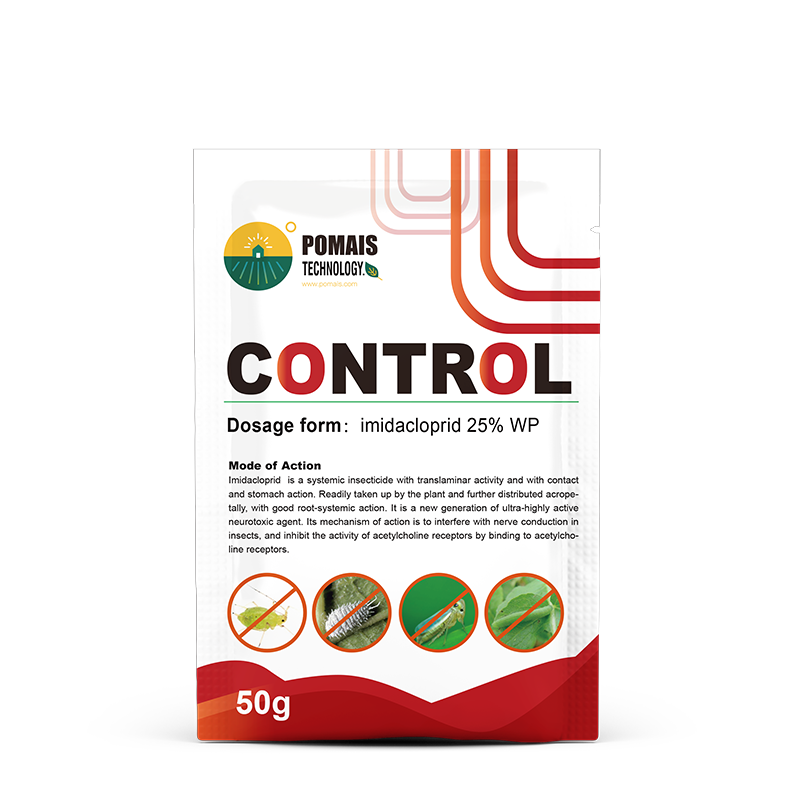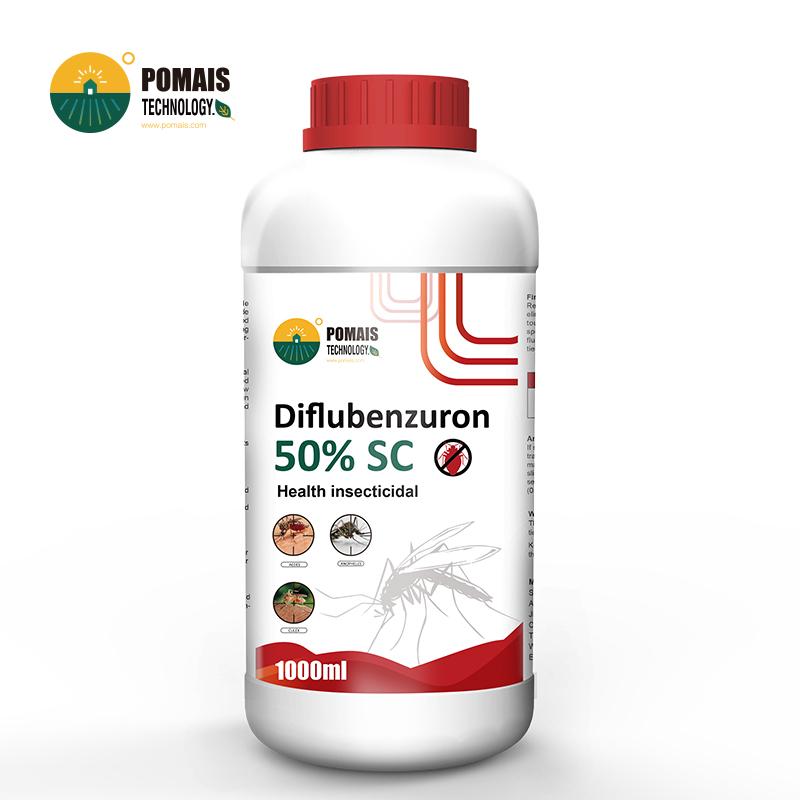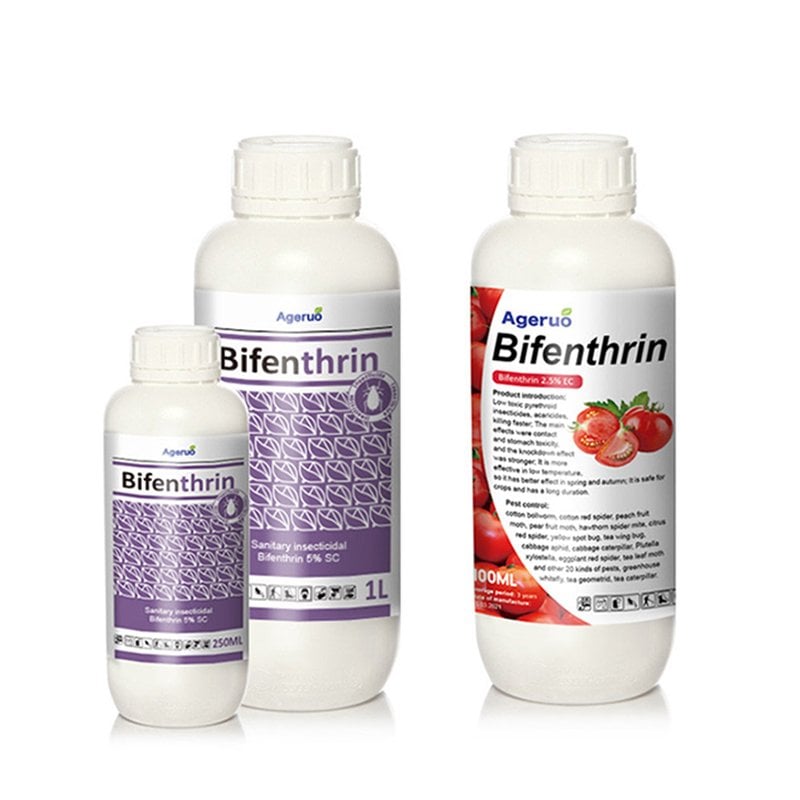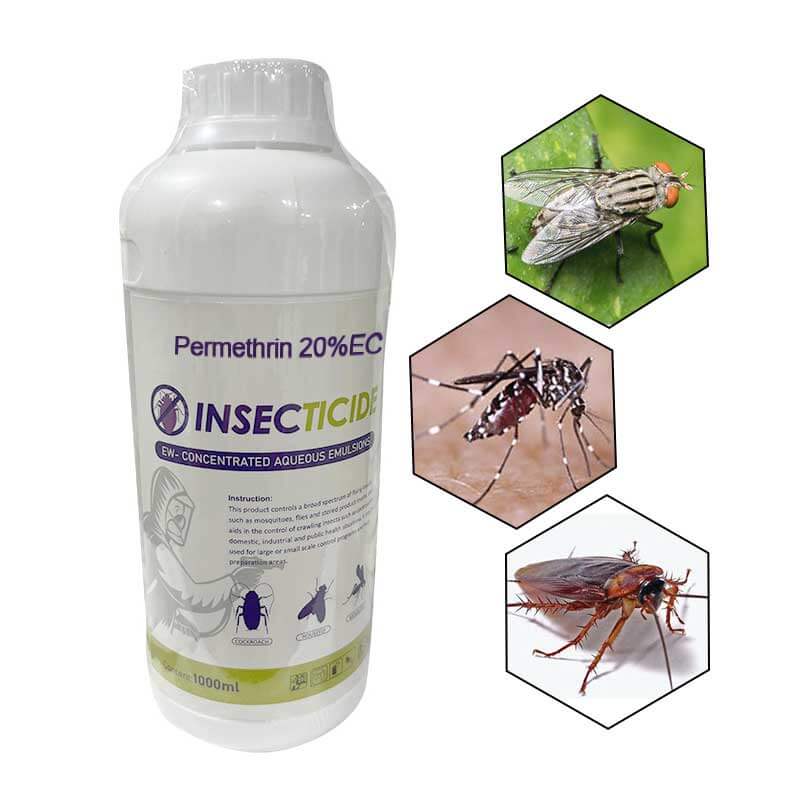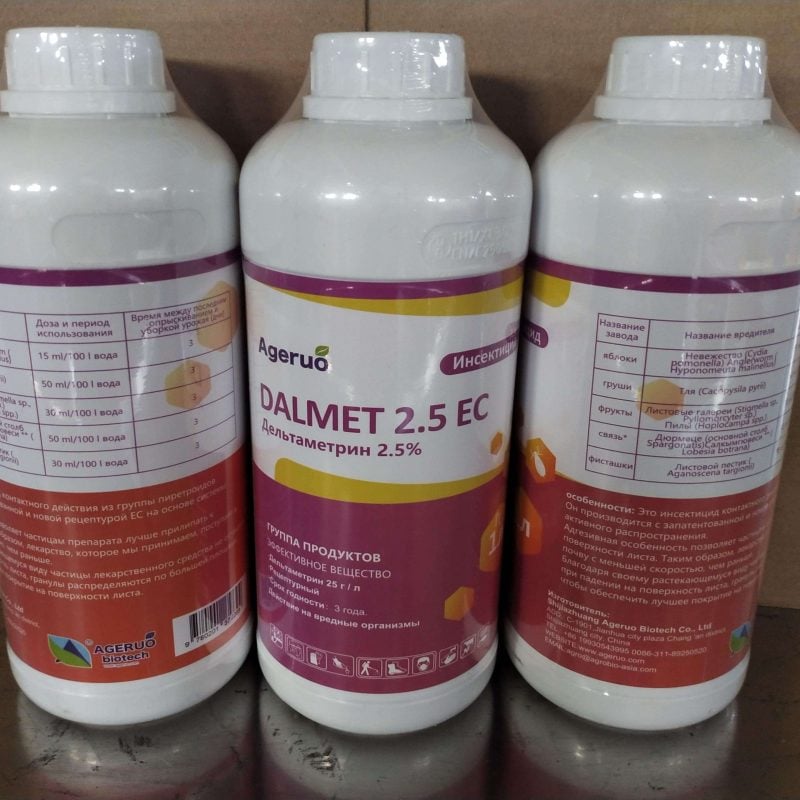Termite Control: ID, Signs, Life Cycle & Subterranean Management
Termites — Why Identification and IPM Matter
Termites are vital decomposers in nature, but a small subset—subterranean, drywood, and dampwood termites—can undermine structures and fixtures. This page gives you termite identification and termite control fundamentals: how to read mud tubes, wood-damage patterns, and swarming windows, plus how habitat and signs separate termite types. The operating model is IPM-first: commission a licensed inspection, correct moisture and construction faults, then deploy professional treatments suited to subterranean or drywood colonies. Compliance comes first—use labeled products and follow local regulations.
Quick checks (field-ready, no dosages):
- Mud tubes on foundations or interior walls → likely subterranean activity; break, verify live workers/soldiers.
- Six-sided pellets below kick-out holes → classic drywood signal in above-ground wood.
- Warm, clear days after rain with flying alates → swarming risk; note room/entry points and call a licensed pro.
- Moisture, soil-wood contact, poor ventilation → fix these first to lower reinfestation risk.
Social Structure & Castes — What Each Caste Does and How to Spot Them
Termites are eusocial: colonies run on cooperative care, a reproductive division of labor, and overlapping generations. Reading the castes in the field helps you interpret what you’re seeing—whether it’s an active subterranean network or a drywood colony in above-ground wood—and decide the next step in an IPM program.
Workers (most numerous)
Wingless, soft-bodied, pale individuals that build shelter tubes, forage for cellulose, tend eggs and immatures, and feed nestmates via trophallaxis. Field cue: when you breach a mud tube or expose damaged wood, workers are usually the first you see, moving quickly and retreating into cover.
Soldiers (colony defense)
Wingless with enlarged heads and mandibles that clearly contrast with the pale body. They guard narrow passages and the entrances of shelter tubes. Field cue: break a tube and look for big-headed termites positioning at the opening while workers flee—classic soldier response.
Reproductives (alates, queens, kings)
Winged alates have two equal-length wings; they swarm, shed wings, pair, and start new colonies. Primary queens/kings maintain the brood; supplementary reproductives can appear in established colonies. Field cues: discarded wings on sills or near lights, or brief indoor/outdoor swarms during favorable weather.
Why caste ID matters (action lens)
- Workers + soldiers inside mud tubes → subterranean pathway likely; document locations for licensed inspection.
- Pellets in dry, above-ground wood + few or no tubes → pattern consistent with drywood; collect samples and escalate for professional ID.
- Alates or discarded wings indoors → record rooms and entry points, then trigger a licensed inspection.
Always follow product labels and local regulations.
Types of Termites — Dampwood, Drywood, Subterranean
What to know: Most structural issues trace to three groups. Each has a distinct habitat and signature sign. Read the signals, then route to the correct inspection and control path.
Dampwood termites
Prefer moist or decayed wood; colonies create large, open galleries. In buildings, they signal leaks, ground contact, or poor ventilation rather than widespread structural colonization.
Where to check: sill plates with moisture, porch posts, bath/kitchen leaks, ground-contact lumber.
Drywood termites
Live entirely in dry, sound wood above ground; no soil contact. Push out six-sided fecal pellets through kick-out holes; galleries cut across the grain.
Where to check: eaves, fascia, attic framing, window/door frames, furniture.
Subterranean termites
Nest in soil and require moisture; reach wood via shelter (mud) tubes; galleries tend to follow the grain. Colonies can be large; swarms often follow warm, clear weather after rain.
Where to check: foundations, stem walls, crawlspaces, slab penetrations, interior/exterior wall baseboards.
Quick compare (principles only)
| Type | Moisture Need | Signature Sign | First Checks |
|---|---|---|---|
| Dampwood | High (leaks/decay) | Open galleries in wet wood | Fix moisture; inspect ground-contact wood |
| Drywood | Low (dry, above ground) | Six-sided pellets + kick-out holes | Inspect frames/eaves; collect pellet samples |
| Subterranean | Soil moisture | Mud tubes; grain-following damage | Map tubes; probe bases; note swarm points |
Life Cycle & Swarming — How Colonies Start and When You’ll See Them
Termite colonies mature through overlapping generations. Workers expand galleries and feed nestmates; soldiers defend; mature colonies produce alates (winged reproductives) that conduct a nuptial flight, shed wings, pair, and seal a starter chamber to lay eggs. Subterranean species base nests in soil and travel through shelter tubes; drywood species remain inside dry, sound wood; dampwood species favor moist/decayed wood. This biology explains why sprays at visible adults rarely solve the root problem—most biomass sits out of reach.
Swarming signals (field-ready, no dates).
- Weather window: warm, calm conditions—often after rain or humidity shifts.
- Light cue: alates are attracted to lights; look for discarded wings on sills, near lamps, or HVAC returns.
- Origin clue: swarms from baseboards/foundation suggest subterranean pathways; swarms from upper trim/furniture suggest drywood activity.
- Duration: events are brief (minutes). Treat them as evidence gathering, not a target for aerosols.
Cue-to-action map (principles only)
| Group | Where swarms tend to originate | What you’ll observe | What to record for the inspection |
|---|---|---|---|
| Subterranean | Baseboards, slab penetrations, utility chases, foundations | Flying alates + discarded wings, nearby mud tubes | Room/entry point, time, photos of tubes/wings |
| Drywood | Upper trim, kick-out holes in dry wood, furniture | Alates, six-sided pellets, fine frass | Location of pellets/holes, samples in a bag |
| Dampwood | Moist/decayed wood, leak sites, ground contact | Large open galleries; evening light attraction | Moisture source, leak photos, material in contact with soil |
Do / Don’t (compliance-first).
- Do: close doors to contain the room, vacuum alates/wings, bag samples, photograph origins, and schedule a licensed inspection.
- Don’t: seal over tubes/holes before documentation; don’t use unlabeled aerosols; don’t assume yard swarms equal structural infestation.
Always follow product labels and local regulations.
Signs (Subterranean) — What to Look For and How to Verify
Primary field signs
- Shelter (mud) tubes — four functional types:
working (soil→wood), exploratory/migratory (from soil, not attached to wood), drop (wood→soil), swarm (alate exit). - Wood damage — hollow, enclosed galleries that follow the grain; thin surface veneer that punctures easily on probing; light-brown debris inside voids.
- Swarm indicators — brief flights; discarded wings near baseboards, slab penetrations, or utility chases.
Quick verification (flashlight + screwdriver only)
- Break a tube → live workers/soldiers moving inside confirms activity; photograph before disturbance.
- Probe suspect members at foundations/sills → note grain-following hollows and thin surfaces.
- Differentiate from drywood → six-sided pellets + kick-out holes suggest drywood, not subterranean; mud + grain-following damage supports subterranean.
- Trace moisture & contact → log leaks, soil–wood contact, poor ventilation—these sustain subterranean networks.
Common confounders (don’t over-call)
- Old, dry tubes with no live insects = historical sign; record and escalate, but don’t label “active” without evidence.
- Carpenter ant frass (coarse, woodlike) vs. termite pellets (ordered, six-sided) vs. mud (soil paste).
Document coordinates, photos, and samples; don’t remove all evidence before the licensed inspection. Always follow product labels and local regulations.
Ecology & Behavior — What Drives Subterranean Pressure
Subterranean termites are moisture-dependent and maintain soil contact to hydrate, thermoregulate, and avoid predators. They move through shelter (mud) tubes and hidden cracks (slab penetrations, utility chases). Warm, humid, low-airflow microclimates, leaks, poor drainage, and wood–soil contact amplify risk.
Foraging dynamics (field meaning).
Foraging can occur year-round where conditions allow. Intensity rises with warm, moist soil and often spikes after rain; it falls in cold or very dry periods. Colonies exploit multiple food points around a structure; workers follow protected routes to sills, joists, and subfloors.
Feeding & gallery patterns.
Termites consume sound wood but prefer fungus-softened wood. Galleries are enclosed, tend to follow the grain, and thin the surface veneer. Expect heavier attack on softer springwood rings and along checks or seams that aid hidden travel.
Colony growth & spread.
Mature colonies are large and can service several foraging sites; satellite groups may bud into independent colonies if connections break. Dispersal happens via swarming alates and by colony division when new resources are found and retained.
Social biology with control implications.
Through trophallaxis (food sharing), workers distribute nutrients—and, in professional programs, bait toxicants—across castes. This cooperative feeding is why bait systems can suppress colonies when placed and maintained by licensed teams.
Always follow product labels and local regulations; inspection and treatment must be performed by licensed professionals.
Management (IPM) — Inspection, Prevention, Materials, Professional Control
Operating model: Inspect professionally → fix moisture/construction faults → choose path by termite type → apply licensed controls → monitor and review.
1) Inspection (licensed, prerequisite)
- Triggers: swarms, mud tubes, grain-following voids, six-sided pellets.
- Deliverables: photo set, tube/entry map, moisture notes, recommended access points.
- Do/Don’t: document before disturbance; avoid DIY drilling/injection; schedule re-inspection after any water event or remodel.
2) Prevention (structure & environment)
- Keep wood–soil clearance; ventilate substructures; fix leaks/drainage; slope grade away from foundations.
- Remove stumps, scrap wood, and cellulose debris near the building; set irrigation and mulch off the foundation line.
- Seal utility penetrations; avoid stucco/siding in contact with soil; maintain splash blocks and gutters.
3) Material choices (principles, no dosages)
- Use code-approved pressure-treated or naturally durable wood where ground contact is unavoidable; protect cuts/ends per label.
- Prefer physical separations (sill gaskets, metal flashing) and sealed joints; keep exterior-grade components maintained.
4) Professional control (principles, no product lists)
- Soil termiticide barriers (nonrepellent): designed to intercept foragers around/under structures; targeted injections at shelter-tube contacts as specified on label.
- Bait systems (IGR-based): stations in soil or above-ground on active runs; rely on trophallaxis to suppress colonies; require monitoring and service logs.
- Evidence handling: pros may remove tubes after documentation to break access; homeowner removal prior to inspection is discouraged.
- Program governance: tie findings to work orders, log station visits, and conduct annual reviews (or seasonally in warm, wet zones).
- Compliance: follow product labels and local regulations; PPE, REI, storage/disposal per label.
Termite Control — Recommended Active Ingredients
Strategy in one line
Subterranean: non-repellent soil treatments + IGR baits, with moisture fixes and pro inspection.
Drywood/Dampwood: wood protection/spot injection; whole-structure fumigation when needed.
Always follow the label and local regulations. No rates provided here.
Subterranean — Non-repellent soil termiticides (core line)
- Fipronil (IRAC 2B) — gold-standard non-repellent; strong transfer effect; long residual.
- Chlorantraniliprole (IRAC 28) — non-repellent; low odor profile; suppresses feeding/activity.
- Imidacloprid (IRAC 4A) — non-repellent ingestion; cost-effective perimeter/structural treatments per label.
Subterranean — Bait actives (IGR; colony suppression)
- Noviflumuron (IRAC 15) — current benchmark IGR bait.
- Hexaflumuron / Diflubenzuron / Bistrifluron / Chlorfluazuron (IRAC 15) — IGR family alternatives by market.
Baits act slowly but suppress the whole colony; require monitoring and replenishment.
Subterranean — Repellent barriers (pre-construction / edge use)
- Bifenthrin / Permethrin / Cypermethrin / Deltamethrin (IRAC 3A) — repellent perimeter bands.
Use mainly for pre-treat or exterior hardening; for active infestations, prioritize non-repellent soil or baits.
Drywood / Dampwood — Wood treatment & spot injection
- Disodium Octaborate Tetrahydrate (borates) — wood protection and remedial treatment.
- Boric acid — labeled dusts/foams for accessible voids.
- Fipronil / Imidacloprid (see above) — foams/injections for reachable cavities (per label).
Drywood — Whole-structure fumigation (licensed only)
- Sulfuryl fluoride — whole-building fumigant for confirmed drywood infestations.
| Active ingredient | IRAC | Primary use | Key note |
|---|---|---|---|
| Fipronil | 2B | Subterranean – non-repellent soil, foam/injection | Strong transfer; long residual |
| Chlorantraniliprole | 28 | Subterranean – non-repellent soil | Low odor; feeding suppression |
| Imidacloprid | 4A | Subterranean – non-repellent soil/voids | Cost-effective; ingestion route |
| Noviflumuron | 15 | Subterranean – bait | Slow, whole-colony suppression |
| Hexa/Diflu/Bistrifluron/Chlorfluazuron | 15 | Subterranean – bait (alternatives) | IGR family options by market |
| Bifenthrin / Permethrin / Cypermethrin / Deltamethrin | 3A | Pre-construction / perimeter | Repellent band; not first choice for active nests |
| Disodium Octaborate Tetrahydrate (borate) | — | Drywood/Dampwood – wood treatment | Penetrative wood protection |
| Boric acid | — | Drywood – spot dust/foam | For accessible voids only |
| Sulfuryl fluoride | — | Drywood – whole-structure fumigation | Licensed professional use only |
Compliance & Risk — Safety, Stewardship, Documentation
Doctrine. Risk = Hazard × Exposure. Follow the product label and local regulations at every step—registration status, allowed sites, PPE, REI (re-entry interval), storage, transport, and disposal. No off-label use.
Non-target & environment. Protect pollinators and beneficials; avoid actions around bloom; prevent drift/runoff; protect water and sensitive areas. Indoors, isolate treated stock, ventilate, and separate customer traffic.
People & facility. Enforce PPE, signage, and access control during inspection and treatment. Keep SDS/COA reachable; train teams on incident reporting. Maintain clean plant/clean site flow: quarantine, tool/tray sanitation, waste segregation, spill response.
Governance. Log findings, decisions, and service visits (who/when/where/what). Keep photo evidence, tube maps, and moisture notes. Annual program reviews in warm, wet regions; more frequent in high-risk facilities.
FAQ
Do DIY sprays solve subterranean termites?
No. Most biomass is in soil nests beyond reach. Book a licensed inspection and follow a structured program.
I found piles of tiny pellets on a sill—what does that mean?
Likely drywood activity. Save a sample, note locations, and schedule professional identification.
Are mud tubes always “active”?
No. Old, dry tubes may be historical. Break a small section: live workers/soldiers confirm activity. Document before disturbance.
Baits vs. soil treatments—how do I choose?
They’re complementary. Nonrepellent soil barriers intercept foragers; baits leverage trophallaxis to suppress colonies. Selection depends on structure, access, and program design by licensed pros.
Do swarms in the yard mean my house is infested?
Not necessarily. Many swarms originate from soil or debris outdoors. Record time/place, collect wings, and request inspection if you see indoor swarms or structural signs.
What should I fix first to reduce risk?
Moisture and construction faults: leaks, poor drainage, wood–soil contact, unsealed penetrations, and low ventilation.
Termites — Why Identification and IPM Matter
Termites are vital decomposers in nature, but a small subset—subterranean, drywood, and dampwood termites—can undermine structures and fixtures. This page gives you termite identification and termite control fundamentals: how to read mud tubes, wood-damage patterns, and swarming windows, plus how habitat and signs separate termite types. The operating model is IPM-first: commission a licensed inspection, correct moisture and construction faults, then deploy professional treatments suited to subterranean or drywood colonies. Compliance comes first—use labeled products and follow local regulations.
Quick checks (field-ready, no dosages):
- Mud tubes on foundations or interior walls → likely subterranean activity; break, verify live workers/soldiers.
- Six-sided pellets below kick-out holes → classic drywood signal in above-ground wood.
- Warm, clear days after rain with flying alates → swarming risk; note room/entry points and call a licensed pro.
- Moisture, soil-wood contact, poor ventilation → fix these first to lower reinfestation risk.
Social Structure & Castes — What Each Caste Does and How to Spot Them
Termites are eusocial: colonies run on cooperative care, a reproductive division of labor, and overlapping generations. Reading the castes in the field helps you interpret what you’re seeing—whether it’s an active subterranean network or a drywood colony in above-ground wood—and decide the next step in an IPM program.
Workers (most numerous)
Wingless, soft-bodied, pale individuals that build shelter tubes, forage for cellulose, tend eggs and immatures, and feed nestmates via trophallaxis. Field cue: when you breach a mud tube or expose damaged wood, workers are usually the first you see, moving quickly and retreating into cover.
Soldiers (colony defense)
Wingless with enlarged heads and mandibles that clearly contrast with the pale body. They guard narrow passages and the entrances of shelter tubes. Field cue: break a tube and look for big-headed termites positioning at the opening while workers flee—classic soldier response.
Reproductives (alates, queens, kings)
Winged alates have two equal-length wings; they swarm, shed wings, pair, and start new colonies. Primary queens/kings maintain the brood; supplementary reproductives can appear in established colonies. Field cues: discarded wings on sills or near lights, or brief indoor/outdoor swarms during favorable weather.
Why caste ID matters (action lens)
- Workers + soldiers inside mud tubes → subterranean pathway likely; document locations for licensed inspection.
- Pellets in dry, above-ground wood + few or no tubes → pattern consistent with drywood; collect samples and escalate for professional ID.
- Alates or discarded wings indoors → record rooms and entry points, then trigger a licensed inspection.
Always follow product labels and local regulations.
Types of Termites — Dampwood, Drywood, Subterranean
What to know: Most structural issues trace to three groups. Each has a distinct habitat and signature sign. Read the signals, then route to the correct inspection and control path.
Dampwood termites
Prefer moist or decayed wood; colonies create large, open galleries. In buildings, they signal leaks, ground contact, or poor ventilation rather than widespread structural colonization.
Where to check: sill plates with moisture, porch posts, bath/kitchen leaks, ground-contact lumber.
Drywood termites
Live entirely in dry, sound wood above ground; no soil contact. Push out six-sided fecal pellets through kick-out holes; galleries cut across the grain.
Where to check: eaves, fascia, attic framing, window/door frames, furniture.
Subterranean termites
Nest in soil and require moisture; reach wood via shelter (mud) tubes; galleries tend to follow the grain. Colonies can be large; swarms often follow warm, clear weather after rain.
Where to check: foundations, stem walls, crawlspaces, slab penetrations, interior/exterior wall baseboards.
Quick compare (principles only)
| Type | Moisture Need | Signature Sign | First Checks |
|---|---|---|---|
| Dampwood | High (leaks/decay) | Open galleries in wet wood | Fix moisture; inspect ground-contact wood |
| Drywood | Low (dry, above ground) | Six-sided pellets + kick-out holes | Inspect frames/eaves; collect pellet samples |
| Subterranean | Soil moisture | Mud tubes; grain-following damage | Map tubes; probe bases; note swarm points |
Life Cycle & Swarming — How Colonies Start and When You’ll See Them
Termite colonies mature through overlapping generations. Workers expand galleries and feed nestmates; soldiers defend; mature colonies produce alates (winged reproductives) that conduct a nuptial flight, shed wings, pair, and seal a starter chamber to lay eggs. Subterranean species base nests in soil and travel through shelter tubes; drywood species remain inside dry, sound wood; dampwood species favor moist/decayed wood. This biology explains why sprays at visible adults rarely solve the root problem—most biomass sits out of reach.
Swarming signals (field-ready, no dates).
- Weather window: warm, calm conditions—often after rain or humidity shifts.
- Light cue: alates are attracted to lights; look for discarded wings on sills, near lamps, or HVAC returns.
- Origin clue: swarms from baseboards/foundation suggest subterranean pathways; swarms from upper trim/furniture suggest drywood activity.
- Duration: events are brief (minutes). Treat them as evidence gathering, not a target for aerosols.
Cue-to-action map (principles only)
| Group | Where swarms tend to originate | What you’ll observe | What to record for the inspection |
|---|---|---|---|
| Subterranean | Baseboards, slab penetrations, utility chases, foundations | Flying alates + discarded wings, nearby mud tubes | Room/entry point, time, photos of tubes/wings |
| Drywood | Upper trim, kick-out holes in dry wood, furniture | Alates, six-sided pellets, fine frass | Location of pellets/holes, samples in a bag |
| Dampwood | Moist/decayed wood, leak sites, ground contact | Large open galleries; evening light attraction | Moisture source, leak photos, material in contact with soil |
Do / Don’t (compliance-first).
- Do: close doors to contain the room, vacuum alates/wings, bag samples, photograph origins, and schedule a licensed inspection.
- Don’t: seal over tubes/holes before documentation; don’t use unlabeled aerosols; don’t assume yard swarms equal structural infestation.
Always follow product labels and local regulations.
Signs (Subterranean) — What to Look For and How to Verify
Primary field signs
- Shelter (mud) tubes — four functional types:
working (soil→wood), exploratory/migratory (from soil, not attached to wood), drop (wood→soil), swarm (alate exit). - Wood damage — hollow, enclosed galleries that follow the grain; thin surface veneer that punctures easily on probing; light-brown debris inside voids.
- Swarm indicators — brief flights; discarded wings near baseboards, slab penetrations, or utility chases.
Quick verification (flashlight + screwdriver only)
- Break a tube → live workers/soldiers moving inside confirms activity; photograph before disturbance.
- Probe suspect members at foundations/sills → note grain-following hollows and thin surfaces.
- Differentiate from drywood → six-sided pellets + kick-out holes suggest drywood, not subterranean; mud + grain-following damage supports subterranean.
- Trace moisture & contact → log leaks, soil–wood contact, poor ventilation—these sustain subterranean networks.
Common confounders (don’t over-call)
- Old, dry tubes with no live insects = historical sign; record and escalate, but don’t label “active” without evidence.
- Carpenter ant frass (coarse, woodlike) vs. termite pellets (ordered, six-sided) vs. mud (soil paste).
Document coordinates, photos, and samples; don’t remove all evidence before the licensed inspection. Always follow product labels and local regulations.
Ecology & Behavior — What Drives Subterranean Pressure
Subterranean termites are moisture-dependent and maintain soil contact to hydrate, thermoregulate, and avoid predators. They move through shelter (mud) tubes and hidden cracks (slab penetrations, utility chases). Warm, humid, low-airflow microclimates, leaks, poor drainage, and wood–soil contact amplify risk.
Foraging dynamics (field meaning).
Foraging can occur year-round where conditions allow. Intensity rises with warm, moist soil and often spikes after rain; it falls in cold or very dry periods. Colonies exploit multiple food points around a structure; workers follow protected routes to sills, joists, and subfloors.
Feeding & gallery patterns.
Termites consume sound wood but prefer fungus-softened wood. Galleries are enclosed, tend to follow the grain, and thin the surface veneer. Expect heavier attack on softer springwood rings and along checks or seams that aid hidden travel.
Colony growth & spread.
Mature colonies are large and can service several foraging sites; satellite groups may bud into independent colonies if connections break. Dispersal happens via swarming alates and by colony division when new resources are found and retained.
Social biology with control implications.
Through trophallaxis (food sharing), workers distribute nutrients—and, in professional programs, bait toxicants—across castes. This cooperative feeding is why bait systems can suppress colonies when placed and maintained by licensed teams.
Always follow product labels and local regulations; inspection and treatment must be performed by licensed professionals.
Management (IPM) — Inspection, Prevention, Materials, Professional Control
Operating model: Inspect professionally → fix moisture/construction faults → choose path by termite type → apply licensed controls → monitor and review.
1) Inspection (licensed, prerequisite)
- Triggers: swarms, mud tubes, grain-following voids, six-sided pellets.
- Deliverables: photo set, tube/entry map, moisture notes, recommended access points.
- Do/Don’t: document before disturbance; avoid DIY drilling/injection; schedule re-inspection after any water event or remodel.
2) Prevention (structure & environment)
- Keep wood–soil clearance; ventilate substructures; fix leaks/drainage; slope grade away from foundations.
- Remove stumps, scrap wood, and cellulose debris near the building; set irrigation and mulch off the foundation line.
- Seal utility penetrations; avoid stucco/siding in contact with soil; maintain splash blocks and gutters.
3) Material choices (principles, no dosages)
- Use code-approved pressure-treated or naturally durable wood where ground contact is unavoidable; protect cuts/ends per label.
- Prefer physical separations (sill gaskets, metal flashing) and sealed joints; keep exterior-grade components maintained.
4) Professional control (principles, no product lists)
- Soil termiticide barriers (nonrepellent): designed to intercept foragers around/under structures; targeted injections at shelter-tube contacts as specified on label.
- Bait systems (IGR-based): stations in soil or above-ground on active runs; rely on trophallaxis to suppress colonies; require monitoring and service logs.
- Evidence handling: pros may remove tubes after documentation to break access; homeowner removal prior to inspection is discouraged.
- Program governance: tie findings to work orders, log station visits, and conduct annual reviews (or seasonally in warm, wet zones).
- Compliance: follow product labels and local regulations; PPE, REI, storage/disposal per label.
Termite Control — Recommended Active Ingredients
Strategy in one line
Subterranean: non-repellent soil treatments + IGR baits, with moisture fixes and pro inspection.
Drywood/Dampwood: wood protection/spot injection; whole-structure fumigation when needed.
Always follow the label and local regulations. No rates provided here.
Subterranean — Non-repellent soil termiticides (core line)
- Fipronil (IRAC 2B) — gold-standard non-repellent; strong transfer effect; long residual.
- Chlorantraniliprole (IRAC 28) — non-repellent; low odor profile; suppresses feeding/activity.
- Imidacloprid (IRAC 4A) — non-repellent ingestion; cost-effective perimeter/structural treatments per label.
Subterranean — Bait actives (IGR; colony suppression)
- Noviflumuron (IRAC 15) — current benchmark IGR bait.
- Hexaflumuron / Diflubenzuron / Bistrifluron / Chlorfluazuron (IRAC 15) — IGR family alternatives by market.
Baits act slowly but suppress the whole colony; require monitoring and replenishment.
Subterranean — Repellent barriers (pre-construction / edge use)
- Bifenthrin / Permethrin / Cypermethrin / Deltamethrin (IRAC 3A) — repellent perimeter bands.
Use mainly for pre-treat or exterior hardening; for active infestations, prioritize non-repellent soil or baits.
Drywood / Dampwood — Wood treatment & spot injection
- Disodium Octaborate Tetrahydrate (borates) — wood protection and remedial treatment.
- Boric acid — labeled dusts/foams for accessible voids.
- Fipronil / Imidacloprid (see above) — foams/injections for reachable cavities (per label).
Drywood — Whole-structure fumigation (licensed only)
- Sulfuryl fluoride — whole-building fumigant for confirmed drywood infestations.
| Active ingredient | IRAC | Primary use | Key note |
|---|---|---|---|
| Fipronil | 2B | Subterranean – non-repellent soil, foam/injection | Strong transfer; long residual |
| Chlorantraniliprole | 28 | Subterranean – non-repellent soil | Low odor; feeding suppression |
| Imidacloprid | 4A | Subterranean – non-repellent soil/voids | Cost-effective; ingestion route |
| Noviflumuron | 15 | Subterranean – bait | Slow, whole-colony suppression |
| Hexa/Diflu/Bistrifluron/Chlorfluazuron | 15 | Subterranean – bait (alternatives) | IGR family options by market |
| Bifenthrin / Permethrin / Cypermethrin / Deltamethrin | 3A | Pre-construction / perimeter | Repellent band; not first choice for active nests |
| Disodium Octaborate Tetrahydrate (borate) | — | Drywood/Dampwood – wood treatment | Penetrative wood protection |
| Boric acid | — | Drywood – spot dust/foam | For accessible voids only |
| Sulfuryl fluoride | — | Drywood – whole-structure fumigation | Licensed professional use only |
Compliance & Risk — Safety, Stewardship, Documentation
Doctrine. Risk = Hazard × Exposure. Follow the product label and local regulations at every step—registration status, allowed sites, PPE, REI (re-entry interval), storage, transport, and disposal. No off-label use.
Non-target & environment. Protect pollinators and beneficials; avoid actions around bloom; prevent drift/runoff; protect water and sensitive areas. Indoors, isolate treated stock, ventilate, and separate customer traffic.
People & facility. Enforce PPE, signage, and access control during inspection and treatment. Keep SDS/COA reachable; train teams on incident reporting. Maintain clean plant/clean site flow: quarantine, tool/tray sanitation, waste segregation, spill response.
Governance. Log findings, decisions, and service visits (who/when/where/what). Keep photo evidence, tube maps, and moisture notes. Annual program reviews in warm, wet regions; more frequent in high-risk facilities.
FAQ
Do DIY sprays solve subterranean termites?
No. Most biomass is in soil nests beyond reach. Book a licensed inspection and follow a structured program.
I found piles of tiny pellets on a sill—what does that mean?
Likely drywood activity. Save a sample, note locations, and schedule professional identification.
Are mud tubes always “active”?
No. Old, dry tubes may be historical. Break a small section: live workers/soldiers confirm activity. Document before disturbance.
Baits vs. soil treatments—how do I choose?
They’re complementary. Nonrepellent soil barriers intercept foragers; baits leverage trophallaxis to suppress colonies. Selection depends on structure, access, and program design by licensed pros.
Do swarms in the yard mean my house is infested?
Not necessarily. Many swarms originate from soil or debris outdoors. Record time/place, collect wings, and request inspection if you see indoor swarms or structural signs.
What should I fix first to reduce risk?
Moisture and construction faults: leaks, poor drainage, wood–soil contact, unsealed penetrations, and low ventilation.

